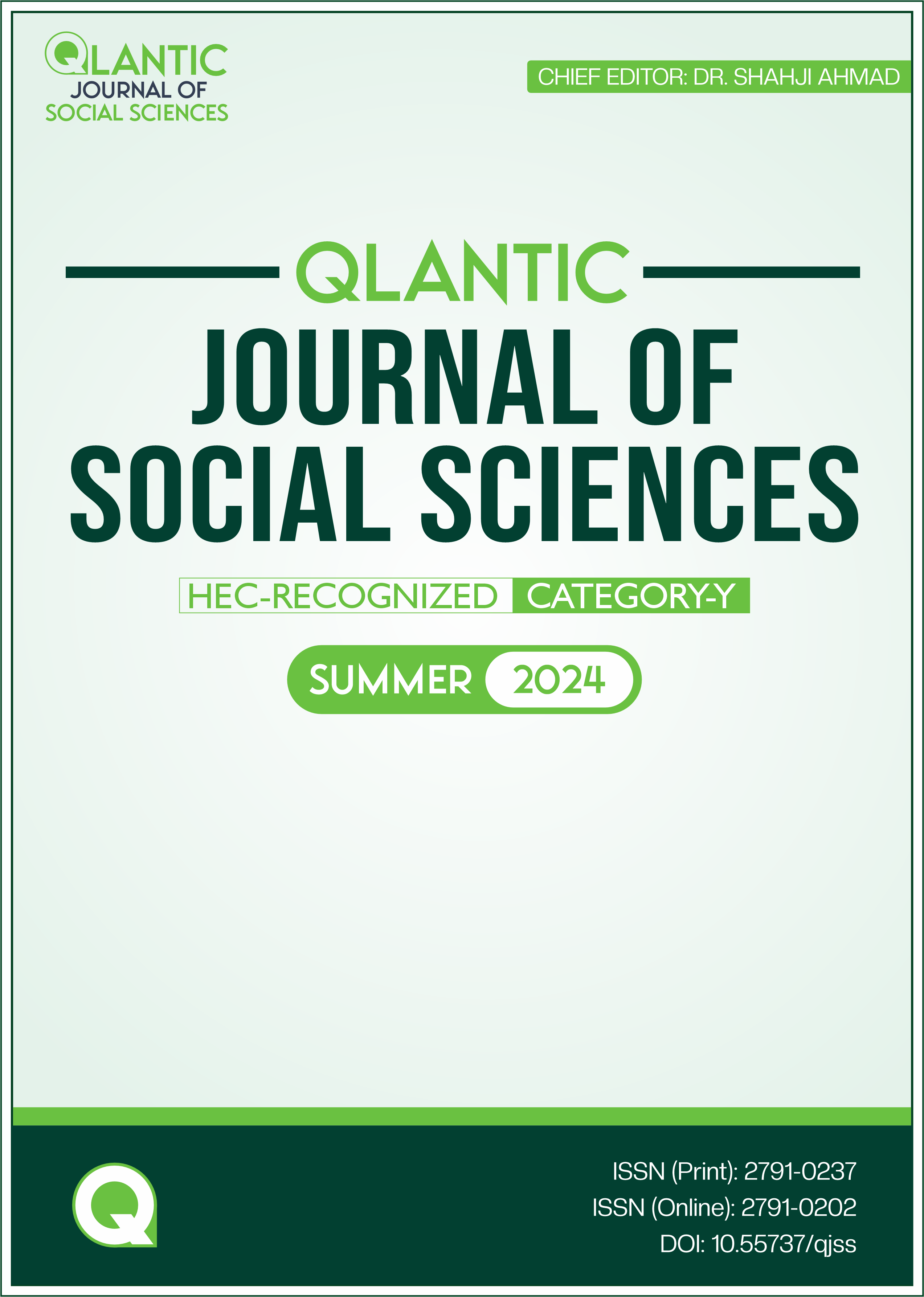Effects of Political Dynamics Advanced by Sectarianism on Family Institutions in Tribal District Kurram of Pakistan
DOI:
https://doi.org/10.55737/qjss.611500502Keywords:
Shia-Sunni, Sectarianism, Political Dynamics, Legislative Bodies, Administrative Officials, Expansion of Formal Courts, Devolution of Power, MaliksAbstract
The study titled "Effects of Political Dynamics Advanced by Sectarianism on Family Institution in Tribal District Kurram of Pakistan" was carried out in the most sectarianism affected two Tehsils of Ali Zai and Parachinar under the quantitative study. A sample size of 200 respondents was randomly selected with an equal proportion of Shia-Sunni from the study universe, and a questionnaire was used as a tool for data collection. The data was analyzed at a uni-variate level with the help of frequency and percentage distributions through the Statistical Package for Social Sciences (SPSS). The association between dependent variables (Family Institution) and independent variables (Political Dynamics) was determined at a bi-variate level of analysis while using Chi-Square test statistics. The study concluded that people vote for their own sect, people never participate in the election campaign of another sect, selected members of legislative bodies mostly secure the objectives of their own sect and prefer their own sect with respect to developmental projects, political leaders influenced the authority of administrative officials, an administrative official appointed in the area most often of their own sect oriented, sect-based politics is part of the family discourse.
Downloads
References
Afzal, S. (2012). Sectarianism and its implications for Pakistan security: Policy recommendations using exploratory study. IOSR Journal of Humanities and Social Science, 4(4), 19-26. https://doi.org/10.9790/0837-0441926
Ahmad, M. (1998). Islamization and Sectarian violence in Pakistan. Intellectual Discourse, 6(1), 11-37. https://doi.org/10.31436/id.v6i1.417
Ahmed, I. (2005). The Politics of Group Rights: The State and Multiculturalism. University Press of America.
Irfani, S. (2004). Pakistan’s Sectarian Violence: Between the ‘Arabist Shift’and Indo-Persian Culture. Religious Radicalism and Security in South Asia, 147170.
Kamran, T. (2009). Contextualizing sectarian militancy in Pakistan: A case study of Jhang. Journal of Islamic Studies, 20(1), 55-85. https://doi.org/10.1093/jis/etn057
Karlsson, I. (1994). Islam och Europa: Samlevnadel ler Konfrontation, Stockholm: Wahlström & Widstrand.
Kaufman, S. J. (2013). Ethnicity as a generator of conflict. In K. Cordell & S. Wolf (Eds.), Routledge Handbook of Ethnic Conflict (1st ed., pp. 92-102). Routledge.
Khan, S., & Chaudhry, H. (2011). Major consequences of the sectarian militancy in Jhang, Pakistan. Pakistan. Academic Research International, 1(3), 73–81. http://www.savap.org.pk/journals/ARInt./Vol.1(3)/2011(1.3-08).pdf
Larson, A. (2009). Toward an Afghan Democracy? Exploring Perceptions of Democratisation in Afghanistan. Afghanistan Research and Evaluation Unit. https://reliefweb.int/report/afghanistan/toward-afghan-democracy-exploring-perceptions-democratisation-afghanistan
Naqvi, H. A. (2018). Political Significance of Shiites. In Pervaiz Iqbal Cheema Maqsudul Hasan Nuri Muneer Mahmud Khalid Hussain (Ed.), Political Role of Religious Communities in Pakistan (pp. 36–39). Institute of Security and Development Policy (ISDP).
Shah, G. (2002). Dalits and the state. Concept Publishing Company.
Takatoo. (2014). Jerga- The Pathan Judicial System. Bilingual/Bi-Annual Pashto/ English Research Journal, 6(12).
Taras, R., & Ganguly, R. (2002). Understanding Ethnic Conflict: The International Dimension. New York: Longman.
Waseem, M. (2002). Democratization in Pakistan: A Study of the 2002 Elections. Oxford University Press
Waseem, M., (2010). Dilemmas of pride and pain: sectarian conflict and conflict transformation in Pakistan. Religion and Development, Working Paper- 48.
Published
Issue
Section
License
Copyright (c) 2024 Muzafar Khan, Dr. Fazli Wadood, Zoya Khan, Fazal Akbar

This work is licensed under a Creative Commons Attribution-NonCommercial 4.0 International License.




